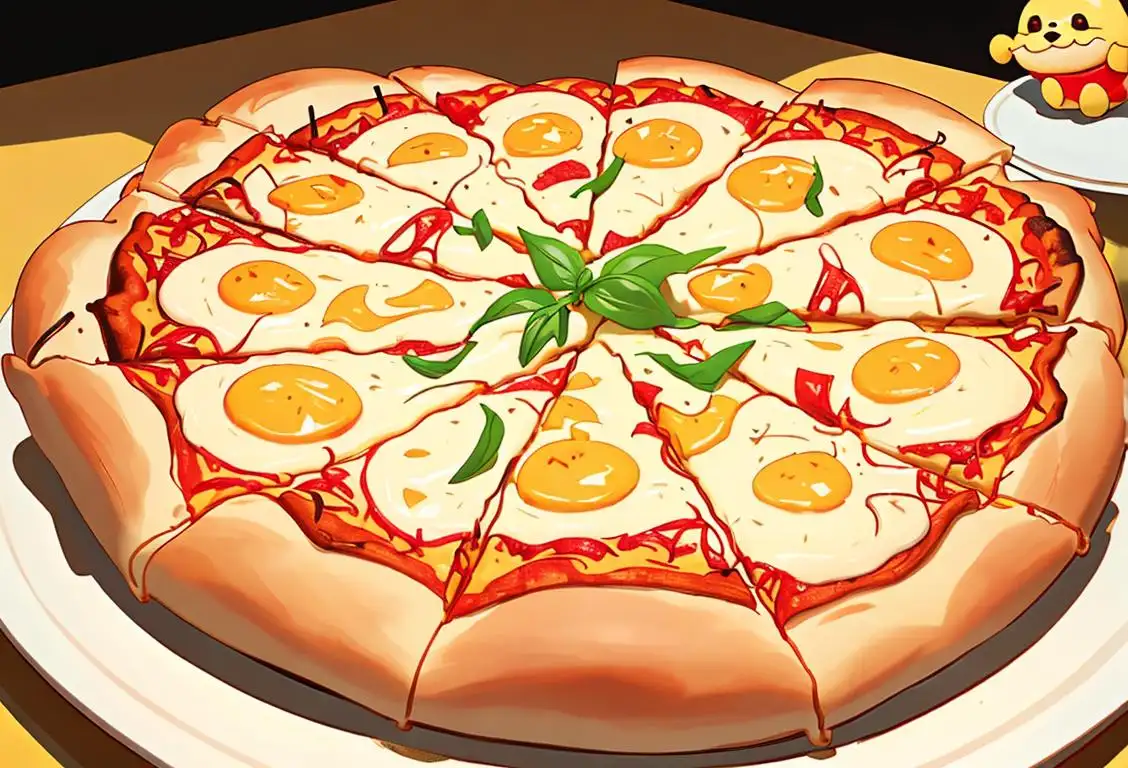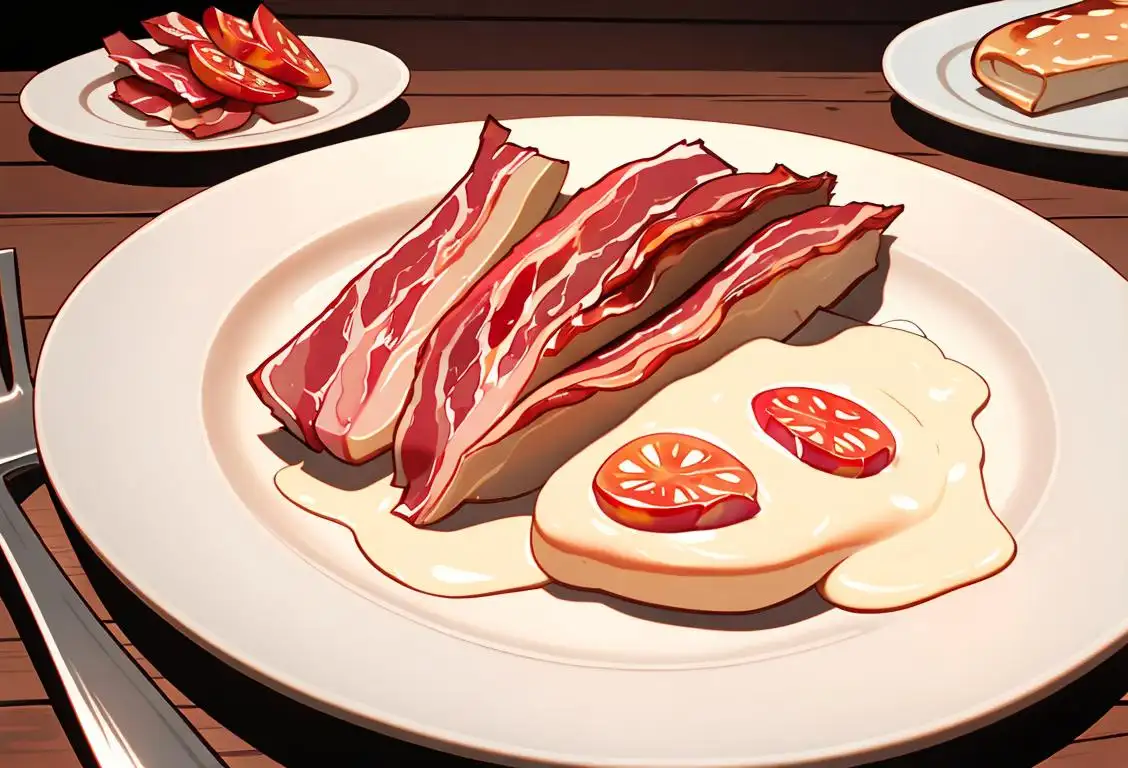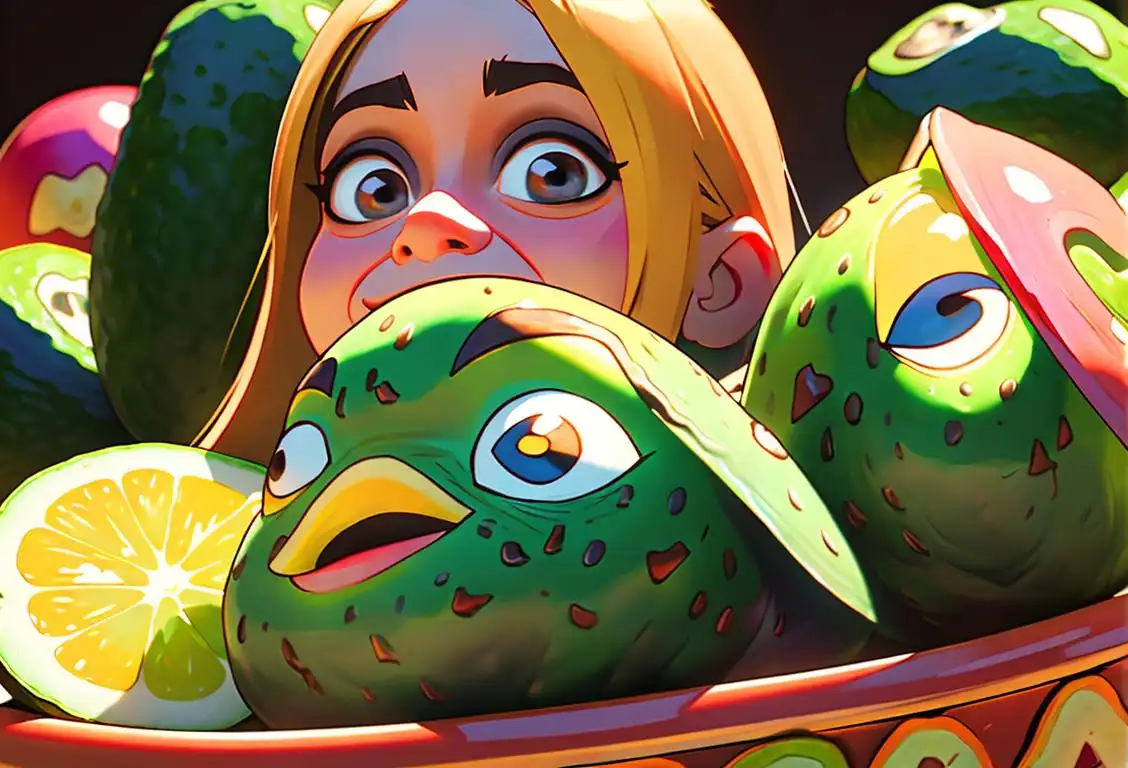National Sweetness Day

Welcome to National Sweetness Day, a day dedicated to all things sweet and delectable! Get ready to satisfy your sweet tooth and indulge in sugary delights that are bound to make your taste buds dance with joy.
When is Sweetness Day?
It's national sweetness day on the 25th August.
The Origins of National Sweetness Day
Are you ready for a sweet journey through history? National Sweetness Day originated from the collective love for all things sweet. From sugary treats to decadent desserts, this delightful day celebrates the joy that sweetness brings to our lives.
While the exact internet history of National Sweetness Day remains a mystery, it first gained significant online attention on August 25, 2015. Since then, people have been eagerly embracing the day to spread sweetness and happiness.
Celebrating National Sweetness Day
On this special day, you have the perfect excuse to indulge in your favorite sweets guilt-free. Whether you're a fan of chocolate, candy, or pastries, now is the time to treat yourself to something delicious.
Why not surprise your loved ones with a homemade dessert or sweet treat? Nothing says 'I love you' more than a freshly baked cake or a box of mouthwatering chocolates.
If you're feeling extra adventurous, you can also take this opportunity to explore new sweet flavors and try desserts from different cultures. Who knows? You might discover a new favorite!
Did You Know?
Did you know that chocolate chip cookies were invented by accident? In 1930, Ruth Wakefield, the owner of the Toll House Inn, ran out of baker's chocolate while making cookies. She substituted it with chopped-up semi-sweet chocolate, expecting it to melt and create chocolate cookies. Instead, the chocolate pieces retained their shape, creating the first batch of chocolate chip cookies!
History behind the term 'Sweetness'
1500 BCE
Ancient Beginnings
Sweetness has been an essential part of human history for thousands of years. The earliest documentation of its significance can be traced back to Ancient Egypt around 1500 BCE. The Egyptians valued sweetness and used honey as a sweetener in their food and beverages. They even had a god dedicated to the sweetness of life named Pesedjet, who symbolized the pleasure of taste and joy.
1000 BC
Ancient Beginnings
In ancient civilizations such as Egypt, Mesopotamia, and India, honey was regarded as the ultimate sweetness. Its golden color, fragrant aroma, and delicious taste made it a highly coveted sweetener. Honey was used not only as a food ingredient but also for medicinal purposes and religious rituals. The use of honey as a symbol of sweetness can be traced back to this early period.
1800 BC
Ancient Beginnings
The concept of sweetness can be traced back to around 1800 BC in ancient civilizations such as Egypt and Mesopotamia. During this time, honey was highly valued for its natural sweetness and was often used as a sweetener in food and beverages. The Egyptians even believed that honey had magical and healing properties, using it in religious rituals and ceremonies.
500 BC
Introduction of Sugar
Around 500 BC, sugar cane, a native plant from Southeast Asia, was introduced to Persia (modern-day Iran). The extraction and refinement of sugar from sugarcane became a significant development in the history of sweetness. Initially, sugar was considered a luxury item, only affordable and accessible to the wealthy elite. Its extraordinary sweetness and versatility quickly gained popularity, turning it into a prized and sought-after commodity.
200 BC
Sugar Cane Discovery
Around 200 BC, the process of extracting sugar from sugar cane was discovered in India. This marked a significant milestone in the history of sweetness, as it provided a new and more accessible source of sweetness. Sugar gradually gained popularity and became a sought-after commodity in various parts of the world.
600 BCE
Greeks and the Art of Sweetness
In Ancient Greece, sweetness took on a new dimension. Around 600 BCE, Greek poets and philosophers began to explore the concept of sweetness beyond its literal taste. They associated sweetness with affection, kindness, and beauty. This metaphorical usage of sweetness became prevalent in their literature, where it represented virtues such as love, harmony, and goodness.
711 AD
Spread of Sugar in Europe
During the Islamic conquest of the Iberian Peninsula, Arab traders introduced sugar to Europe. The Moors, who were prominent in the region, established sugar plantations in Spain and Portugal, further spreading the usage of sugar in European culture. As trade routes expanded, sugar gradually became available to a wider audience, leading to an increased demand for sweetness in European cuisine.
600 CE
Sugar's Sweet Journey
The discovery of sugar cane cultivation in India around the 4th century CE brought a revolution to the world of sweetness. The process of refining sugar from sugarcane juice was developed in India, and it quickly spread to other parts of the world, including the Middle East and Europe. The Persians introduced sugar to the Arab world, which eventually reached Europe during the Crusades. The availability of sugar led to a significant increase in sweet treats and desserts, becoming more accessible to people beyond the elite.
600 AD
Sugar Spreads to Persia
By the 7th century AD, sugar production and consumption had spread to Persia (modern-day Iran). Persians began developing innovative techniques to refine sugar and create exquisite confections and desserts. This expansion of sweetness further enriched the culinary traditions of the region.
1100 AD
Crusaders and Renaissance Sweetness
During the Crusades in the 11th and 12th centuries, European crusaders encountered Middle Eastern sweets and spices, broadening their culinary horizons. This exposure to foreign flavors and the quest for exotic goods fueled a desire for sweetness in Europe. The Renaissance later brought about the emergence of sugar refinement techniques in European countries, giving rise to delicate pastries, candies, and other sweet treats.
17th Century
Honey's Rival: The Rise of Sugar
In the 17th century, sugar surpassed honey as the dominant sweetener in Europe. Sugar became more affordable and widely utilized, replacing honey in various culinary preparations. Its availability contributed to the expansion of the confectionery industry, and the emergence of candies, pastries, and cakes became increasingly popular. The demand for sugar also had a significant impact on global trade and colonization as European powers sought to establish sugar plantations in the Caribbean and the Americas.
16th Century
The Age of Exploration and Global Sugar Trade
The 16th century marked a turning point in the history of sweetness with the European Age of Exploration. European explorers set sail in search of new trade routes, and sugar became a crucial commodity in the global trade network. European powers like Portugal, Spain, and later the Netherlands and England, established sugar plantations in their overseas colonies, notably in the Caribbean and the Americas. The mass production of sugar led to its increased accessibility and affordability, making sweetness a more common part of people's lives.
19th Century
Refinement and Industrialization
The 19th century marked a turning point in the sweetness industry with the refinement of sugar production and the rise of industrialization. In 1800, the German chemist Franz Achard developed a method to extract sugar from sugar beets, making sugar more accessible and affordable in Europe. This discovery further expanded the availability and variety of sweetened products. The industrial revolution accelerated the mass production of sugar, revolutionizing the sweet treat market and changing dietary habits worldwide.
18th Century
Industrial Revolution and Sugar
The 18th century marked the beginning of the Industrial Revolution, which brought significant advancements in technology, transportation, and commerce. These developments, coupled with the expansion of European colonial powers, led to increased trade of sugar and greater accessibility to sweetness. Sugar plantations were established in the Caribbean and the Americas, becoming major sources of sugar production and distribution.
18th Century
Industrial Revolution and the Rise of Refined Sweeteners
With the advent of the Industrial Revolution in the 18th century, the production of refined sweeteners boomed. Technological advancements allowed for the mass production of refined sugar from both sugar cane and beets. Refined sugar, with its pure and uniform sweetness, rapidly replaced honey and other natural sweeteners in many culinary and confectionery applications. The growing availability of sweets became a symbol of affluence and a source of pleasure in the emerging consumer culture.
20th Century
Artificial Sweeteners and Beyond
The 20th century witnessed the development of artificial sweeteners, which provided alternatives to traditional sugar. In 1879, a chemist named Constantin Fahlberg accidentally discovered saccharin, the first commercially successful artificial sweetener. Later, other synthetic sweeteners, such as aspartame and sucralose, followed. These alternatives gained popularity among individuals seeking low-calorie or diabetic-friendly options. Furthermore, the century saw the proliferation of sweetened beverages, chocolates, and a multitude of other innovative sweet treats.
20th Century
Mass Production and Innovation
The 20th century witnessed the mass production of sugar and the rise of new sweetening agents like high fructose corn syrup. The development of convenient, processed foods led to a surge in the consumption of sweetened products. Furthermore, advancements in food science and technology enabled the creation of artificial sweeteners, reducing the need for natural sweeteners like sugar in certain applications.
20th Century
Artificial Sweeteners and the Diet Industry
The 20th century witnessed the exploration and development of artificial sweeteners, such as saccharin, cyclamate, and aspartame. These sugar substitutes provided sweetness without the calories associated with sugar, leading to a significant impact on the food and beverage industry and the rise of diet products. Sweetness became a multifaceted concept, encompassing both natural and artificial options, as consumers sought healthier alternatives to satisfy their cravings for sweetness.
Present
Sweetness in Modern Culture
Today, sweetness permeates various aspects of modern culture. From the indulgence in desserts and sugary treats to the sweetness associated with gestures of kindness and affection, the term 'sweetness' has evolved beyond just a taste sensation. It represents a symbol of joy, happiness, and harmony, connecting people through shared experiences of delight. Whether in the form of traditional sweets or the sweet moments of life, 'sweetness' continues to influence and enhance our daily lives.
Present
Sweetness in Modern Culture
Today, sweetness remains an integral part of our lives and culture. It has transcended its initial taste paradigm to represent positive qualities such as kindness, affection, and joy. Sweet treats and dessert traditions can be found in various cultures worldwide, each reflecting their distinct culinary heritage. Moreover, the concept of 'sweetness' is often used metaphorically to describe pleasurable experiences and moments of emotional connection. The journey of sweetness continues to evolve as new flavors, sweeteners, and culinary innovations emerge.
Did you know?
Did you know that chocolate chip cookies were invented by accident?Tagged
food fun loved onesFirst identified
25th August 2015Most mentioned on
25th August 2015Total mentions
14Other days
Biscuit Day
Cheese Lovers Day
Cheese Pizza Day
Agriculture Day
Bacon Day
Medal Of Honor Day
Pumpkin Day
Foundation Day
Guac Day
Drink A Beer Day









